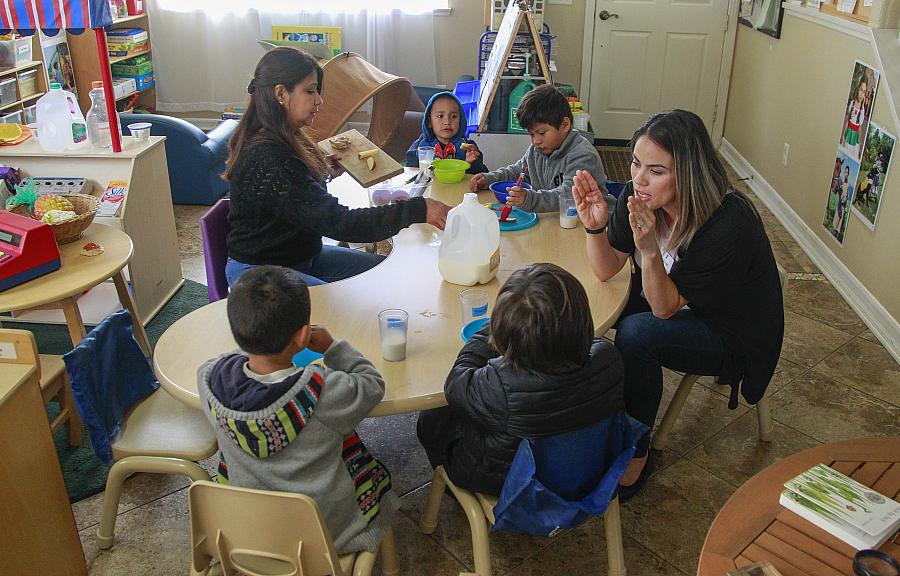Child care is expensive in California, and subsidies meant to help families aren’t always working as they should

(Eduardo Contreras/The San Diego Union-Tribune)
If you live in California and you have a baby, it will cost you anywhere from $10,600 to $16,400 on average to pay for a year of child care, according to the advocacy organization Child Care Aware. That means if you want to take your child to a child care center — and if you manage to find a spot in your neighborhood that is available — it will cost you more than a year’s worth of in-state tuition in the University of California system.
It’s no secret that child care is expensive and out of reach for many families. That’s a problem because child care is one of the most important services families need. Parents can’t go to work without it, and children need it to flourish during one of the most important times of their lives in terms of development.
But unlike K-12 school, child care for children between ages 0 and 5 is neither guaranteed nor free. Many families struggle to find available child care that works for their schedule and location, let alone pay for it.
The good news is that there are multiple government programs that provide free child care to certain families or help families pay for child care. The bad news is that this aid has been difficult to obtain and it has historically skipped over thousands of families who can’t afford child care on their own.
That’s largely because the income level you need to qualify for assistance is low and doesn’t realistically match with California’s high cost of living and high cost of child care. Because of this, advocates say these programs have tended to only serve lower-income families, while many other families fall into the gap between qualifying for help and being able to afford child care. Even after getting a subsidy, some families still have to pay fees out of their own pocket.
One of the most surprising things I’ve learned in reporting on child care is that millions of government dollars meant to pay for preschool or child care have gone unused and have been returned to the government. San Diego County alone returned more than $11 million of unused child care funds to the state in 2017, according to a University of San Diego report. That was even more shocking to me considering that waitlists for a child care subsidy have traditionally been thousands-of-families long because the state has not funded the subsidy system enough to pay for everyone who is eligible.
I’ve touched upon these issues while reporting on child care in San Diego County, but I wonder how these problems are playing out statewide. I’ve read a lot of reporting about the lack of affordable child care, but not as much reporting that follows where government money is going, and where it isn’t going, when it comes to child care.
For my 2022 National Fellowship reporting project, I’ll be asking a series of crucial questions: Who is getting help in paying for child care? How many families are falling in the gap between affordability and aid? How many millions of child care dollars have gone unused? And which parts of the state are struggling the most with a lack of access to affordable child care?
A big part of the problem is that data about child care is scarce and not easily accessible to the public. California has no centralized, publicly available data system for child care like it does for K-12 education. There is no clear way for the public to find out who is enrolled in child care or who is benefiting from government-funded child care programs. The task has largely fallen to nonprofits who compile and publish data and reports about child care, but that information is often limited and specific to certain counties or regions in the state.
For my fellowship project, I will seek to fill in those gaps in data. I will obtain statewide data about who is and who is not being served through the state’s subsidy programs. I will use that data to delve into the reasons why child care is unaffordable for so many families, investigate why child care funding is not always utilized, explore why government aid programs are limited in making child care accessible for families, and examine what kinds of sacrifices families are making when they can’t afford child care.
I hope this project will at least help the public understand more about why child care is unaffordable, shine a light on shortfalls and solutions in government support for child care, and show families what they can do to find help in securing child care.

